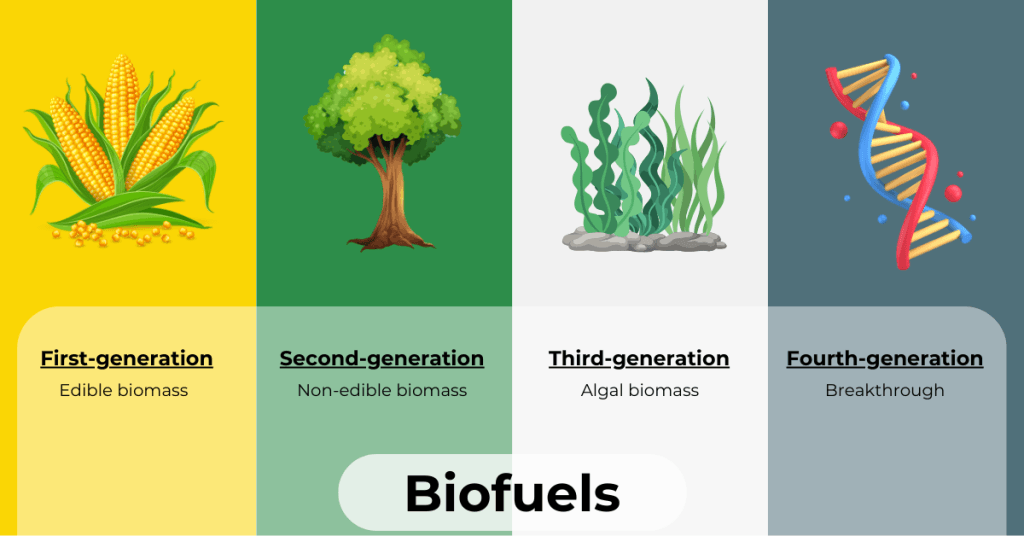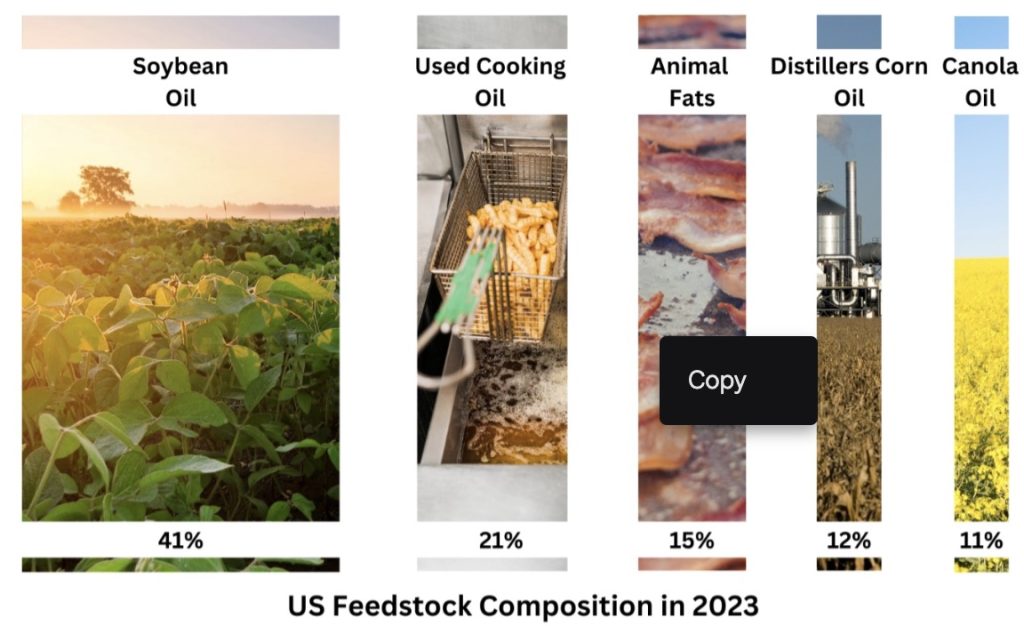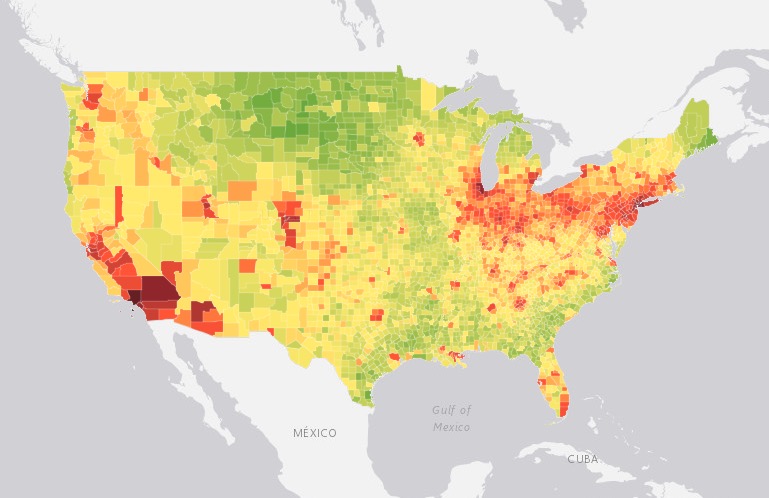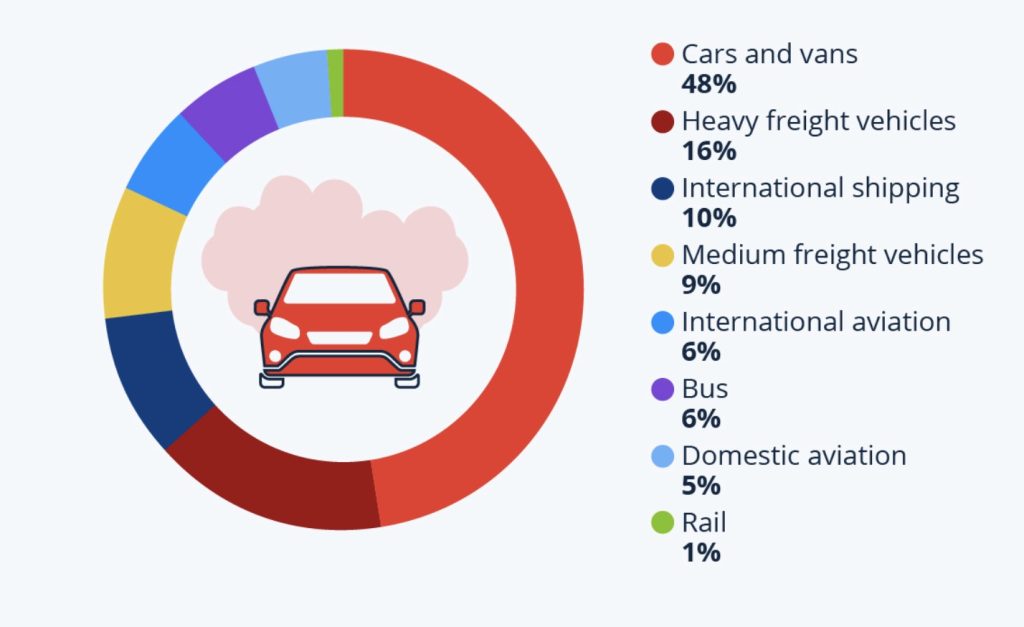What are alternative fuels?
Alternative fuels, vehicles, and infrastructure benefit the economy, environment, public health, and national security. These fuels can be sourced from non-petroleum and renewable resources that support domestic production and diversify the transportation fuel mix.
Alternative fuels are an alternative to gasoline and diesel and their use in vehicles typically reduces emissions compared to gasoline or diesel, contributing to a cleaner and more sustainable future. Some alternative fuels are derived from fossil fuels while others are produced from plant-based materials or organic waste and are called biofuels.
Biofuels
Biofuels were popular when they were first invented and are gaining attention once again as a sustainable way to cut carbon emissions and fight global warming in new and existing vehicles. Biofuels can include solid fuels like wood pellets and biogas or syngas, though liquid is more common. The term “advanced biofuels” refers to a growing field of biofuel production that utilizes waste materials like garbage, animal fats, and used cooking oil to create liquid fuels.
Biofuels are categorized into four generations based on their production sources and methods:
- First-generation biofuels come from row crops grown on arable land
- Second-generation biofuels are made from fast-renewing biomass like plants and animal materials
- Third-generation biofuels use oil-rich algae, which can also produce ethanol from dried leftovers
- Fourth-generation biofuels are made on non-arable land, using advanced methods like electrofuels and solar fuels, offering carbon-neutral, sustainable energy

What alternative fuels are available?
Alternative fuels currently include biofuels, compressed natural gas, liquified propane gas, hydrogen, electricity, and other forms of energy that are growing in popularity.
While they may seem like new technology, biofuels have existed since the invention of internal combustion engines and used throughout history when liquid fossil fuel supply was short. For example, vehicles powered by wood gas were commonly used during World War II to save petroleum for the war effort.
Biofuels include renewable diesel, biodiesel, ethanol, and biogas. Biofuels typically have a lower energy density than conventional fuels. For example, a gallon of biodiesel holds 93% of the energy in a gallon of diesel, while ethanol (E85) delivers only 73% of the energy found in gasoline.
Renewable diesel and biodiesel
As aforementioned, biofuels can be categorized into four generations. A popular second-generation biofuel is renewable diesel. Renewable diesel can serve as a drop-in replacement for conventional diesel that typically requires no modifications for most engines or fueling infrastructure. Renewable diesel is generally produced through a hydrogenation process similar to the process used to make standard diesel. The also yields several by-products, including renewable propane and naphtha, a component that can be used to make renewable gasoline.
Biodiesel, another second-generation biofuel, is also a renewable alternative to standard diesel. This non-toxic, low-carbon fuel is typically blended with diesel fuel in blends up to 20% (B20) for use in compression ignition engines. However, recent technical and quality developments have led to an increase in the use of blends such as B30 (30% biodiesel) and B99 (99% biodiesel) to meet decarbonization goals. Biodiesel is produced through a chemical process called transesterification, which separates glycerin from waste oils, animal fats, and plant-based or oils. This process produces a fuel that is chemically similar to diesel fuel and known as methyl esters (or ethyl esters). The process also produces renewable glycerin as a valuable byproduct used in soaps, cosmetics, and other products.

Ethanol
Ethanol, a first-generation, can be used in traditional spark ignition vehicles designed to run on higher blends or when blended with gasoline.when blended with gasoline. Ethanol blending is widespread, with over 98% of all gasoline sold in the United States containing a at least 10% ethanol, and can be blended with gasoline in higher percentages to create popular blends like E15 (15% ethanol) and E85 “Flex Fuels” (51-83% ethanol).
The demand for biofuels, particularly ethanol, is projected to grow globally in the coming years. However, rising food prices, trade tensions, and social concerns have fueled debate over the feasibility of increasing first-generation biofuel usage for transportation. Ethanol remains the most widely used liquid biofuel worldwide, with the United States and Brazil leading production at 89% of the global total.
Compressed natural gas and propane
Compressed natural gas (CNG) and liquefied petroleum gas (LPG), or propane, are created from fossil fuels but burn cleaner than petroleum. CNG is an alternative to gasoline and diesel, primarily made up of methane. It is found alongside other fossil fuels like coal and oil or produced by methanogenic organisms in landfills. The gas is extracted and compressed to high pressure for storage in vehicle fuel tanks. Propane is derived from natural gas processing and crude oil refining, including ethane, methane, propane, butane, and heavier hydrocarbons.
Hydrogen
Hydrogen, used in fuel cells to generate electricity, is a zero-emission alternative fuel derived from various energy sources. Drivers of light-duty fuel cell electric vehicles (FCEVs) can refuel in under 5 minutes and achieve a range of over 300 miles. Ongoing research and commercial efforts aim to expand hydrogen fueling infrastructure and boost FCEV production.
While a promising technology, like all fuels, hydrogen has several drawbacks, including its flammability and potential for leaks, storage challenges, and the process of production, which can be energy intensive.
Electricity
Lastly, one of the most popular forms of alternative fuel is electricity. Electric vehicles (EVs) store electrical energy in a rechargeable battery pack, which powers an electric motor to turn the wheels, replacing the traditional gasoline engine. The motor’s power propels the car, and the battery can be recharged by connecting it to an external power source, such as a charging station. Transitioning to EVs typically requires dedicated charging infrastructure, which can be a hurdle for consumers living in multi-family residential complexes and dense urban areas with limited space for chargers.
Demand for electricity in the U.S. is expected to grow 2% annually through 2050 , representing a 50% increase in overall demand over the next two and a half decades, largely driven by EVs, residential growth, and the rise of data centers. This unprecedented growth is expected to require billions of dollars in investments to meet the demand. In addition to the requirement for additional energy, EVs require mining of precious metals, leading to concerns over climate, human rights, and environmental consequences.
Why are alternative fuels important?
Clean transportation isn’t just something that is nice to have—it is essential to our health and economy long-term. The use of alternative fuels can help to lower tailpipe and lifecycle carbon emissions while the U.S. transitions to the cleanest and most efficient technologies over time.
How are alternative fuels vital to health?
Research shows that emissions from cars cause a variety of health problems, including heart attacks, birth defects, delayed development, cancer, dementia, early death, and respiratory viruses. People living within 100 meters of a major road also face a 42 percent higher risk of ischemic stroke compared to those living more than 400 meters away. There are a number of zip codes across the country where the zip code next door has 10 to 12 year different life expectancy.
4 million kids acquire asthma every year because of proximity to a roadway. It is estimated that over 45 million people in the U.S. live within 300 feet of major transportation facilities. This raises concerns about health risks from air pollutants emitted by vehicles.

Emissions come from exhaust, fuel evaporation, tire wear, and dust. Traffic, vehicle type, fuel, wind, and terrain all affect pollutant levels near major roads. More traffic generally increases emissions, but congestion and stop-and-go driving can heighten specific pollutants. Rush hours and calm winds often result in the highest pollution levels.
Some measures have been put in place to help mitigate emissions, the most important of which is the Clean Air Act. The Clean Air Act of 1970 is widely regarded as the most comprehensive public health law in U.S. history.
In cities like Pittsburgh, Salt Lake City, and Los Angeles, air pollution was so severe in the mid-twentieth century that residents would look up and not see the sun. As Gina McCarthy, the Environmental Protection Agency (EPA) administrator from 2013 to 2017 recalled, the pollution was a “visceral experience.” This reality became painfully evident in 1948, when a four-day smog in Donora, Pennsylvania, killed 19 people and sickened 7,000, spurring increased awareness about air pollution.
The Clean Air Act established key air quality standards, aiming to protect public health rather than focusing on cost or technological barriers. From 1970 to 1990, the Clean Air Act contributed to significant reductions in air pollutants: carbon monoxide decreased by 50 percent, particle pollution by 45 percent, sulfur dioxide by 40 percent, and nitrogen dioxide by 30 percent. These improvements in air quality generated $22 trillion in economic benefits, highlighting the long-term value of protecting public health.
How is clean transportation beneficial to the environment?
Transportation accounts for roughly 48 percent of CO2 emissions worldwide and 28 percent of U.S. greenhouse gases overall, the most of any sector. Petroleum fuels power over 90 percent of transportation and emit high greenhouse gases. Besides CO2, internal combustion engines emit other gases in their exhaust and fleet owners should be cognisant of non-carbon emissions.

Transforming transportation is vital to addressing climate change. Scientific data from natural sources like ice cores, rocks, and tree rings, along with modern tools such as satellites and instruments, all indicate a changing climate. According to NASA, while Earth’s climate has changed throughout history, the current rate of warming is unprecedented—it is undeniably driven by human activities since the mid-1800s and is occurring at a pace unmatched in the past 10,000 years. From rising global temperatures to melting ice sheets, the evidence of a warming planet is undeniable.
To keep global warming below 2°C, replacing gasoline and diesel with low-carbon alternatives is essential. Most light- and medium-duty sectors must transition to electric vehicles powered by renewable energy, while the remaining hard-to-electrify vehicles must be nearly carbon-neutral by using alternative fuel like biodiesel, ethanol, renewable propane, natural gas, renewable diesel, and hydrogen produced from renewable energy by 2050.
Biofuels are especially of interest because they release the carbon absorbed by the crops they are derived from, making them essentially net-CO2 neutral. Using a fuel such as ethanol, renewable diesel or biodiesel can be effective in reducing emissions in a traditional vehicle. Additionally, biodiesel is considered non-toxic and biodegradable, while ethanol and renewable diesel are considered less-toxic and biodegradable.
Switching to CNG or LPG can result in notable CO2 reductions as well, despite their fossil nature. LPG and natural gas also pose minimal risk of soil or water contamination if spilled, as they quickly vaporize.
However, despite this good news, climate change poses risks to alternative fuels’ production and distribution. Extreme weather events can damage infrastructure, with Midwest floods and droughts liquid and gaseous fuel production and energy transmission. Rising temperatures may also strain the electric grid, increasing the likelihood of power outages that affect electric vehicles.
How is clean transportation economical?
Using alternative fuels and advanced vehicles over conventional options boosts efficiency, lowers costs, and reduces emissions in the U.S, on top of the billions of dollars that could be generated by healthier individuals. While gasoline and diesel are convenient, natural gas is often cheaper and more stable. It consistently costs less per gallon equivalent, and converting diesel trucks to CNG can be more economical long-term. Many fleets, including city buses and garbage trucks, have saved millions by switching to CNG, benefiting from its lower and predictable costs.
Biodiesel offers higher cetane and lubricity than when blended with diesel, improving performance and lowering maintenance costs. Similarly, ethanol boasts a higher-octane rating than gasoline, which is one of the reasons why NASCAR uses a 15% blend of ethanol in gasoline, a blend that is growing in availability at pumps across the country. Using blends can make a significant difference in the way your vehicle operates and its longevity.
Alternative fuels are not a want but a need
In 2006, scientists proved burning fossil fuels was creating carbon emissions and destabilizing Earth’s health. Due to this and other distressing news on climate change, use of fossil fuel has decreased while use of renewable energy tech has increased over the last 10 years.
Though the Clean Air Act was monumental, the requirements put in place by it were left to individual states to enforce. This has posed challenges for states with industries that opposed stringent regulations, such as oil and gas-producing states.
Transitioning to alternative fuels is essential for a cleaner, healthier, and more cost-effective transportation future. From reducing harmful emissions and improving air quality to stabilizing fuel costs and enhancing energy security, these fuels offer significant benefits.
There are many programs and funding opportunities to begin implementing alternative fuels, such as EMPOWER and the B20 Club of Illinois. Many organizations have made zero- and reduced-emission goals, from larger operations like Pace Bus to WasteNot’s Compost’s EV fleet and refuse truck, both in the Chicago area. Other organizations like Pilot-Flying J, PepsiCo, and ADM are teaming up to advance the use of existing alternative fuels in combination with innovative technologies to decarbonize their fleet operations.
Alternative fuels are more widely used than many realize, with several proven options available. As technology advances and infrastructure expands, adopting alternative fuels will play a crucial role in mitigating climate change, boosting economic efficiency, and ensuring long-term sustainability. Vehicle conversion kits are also available, so anyone can make the switch to alternative fuels. Embracing cleaner transportation solutions today paves the way for a more resilient and environmentally responsible future.

Whitney began working with IACT in 2023. With a degree in English and a minor in Art, Whitney has worked as both a newspaper reporter and a digital marketing and events manager, bringing 7 years of marketing and 8 years of content creation experience to IACT. Whitney is passionate about nature and preserving the environment, including solutions to cleaner air and greater sustainability, and is a former Chicago resident.



